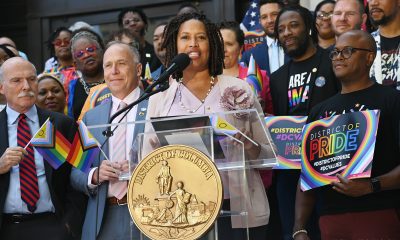Living
Glory days
Tracks — gay nightlife staple of ‘80s/’90s — remembered fondly
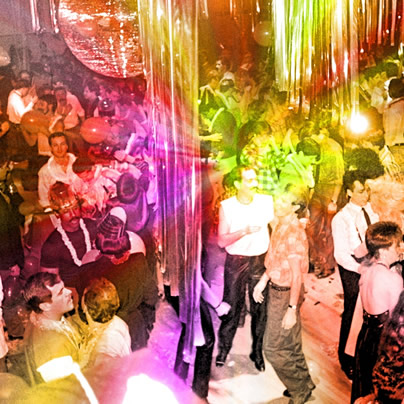
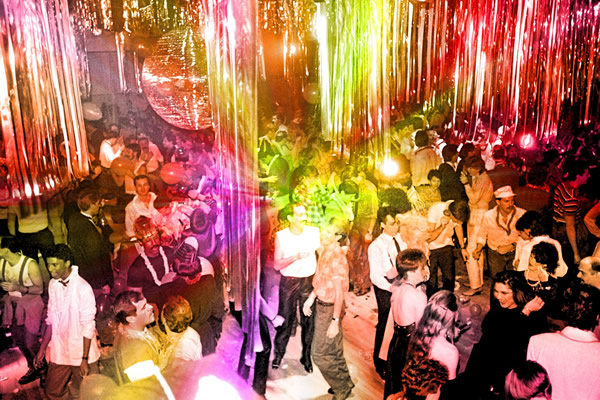
Tracks (Washington Blade file photo)
The planning and organizing has taken on all the earnestness and care of a high school or college reunion.
But in a series of events scheduled for this weekend at three D.C. clubs, patrons and employees of a gay nightclub called Tracks — which entertained and some say mesmerized thousands during its run from 1984 to 1999 — will come together for a reunion that may have a far greater meaning for them than a school reunion, according to organizers.
“Tracks nightclub is widely revered as the legendary nightclub of Washington, D.C.,” says a statement on the event’s website, TracksDC.com.
“And although there have been many other nightclubs, parties, events and gathering places that may hold fond memories for many from Washington, Maryland, Virginia and the surrounding region, there is no denying that Tracks meant considerably more to considerably more people for considerably more years than any other nightclub in D.C. history,” the statement says.
Patrick Little, a Tracks bartender and manager and one of the lead organizers of the reunion, said 100 percent of the proceeds for the reunion will go to seven non-profit charitable groups, including Whitman-Walker Health, the House of Ruth shelter for homeless women, the Sexual Minority Youth Assistance League (SMYAL) and the Mautner Project for lesbians with cancer and other serious illnesses.
Other recipients of the proceeds include the AIDS service group Us Helping Us, the D.C. Center and the Metropolis Fund, which raises money to support local and national AIDS causes.
Denver-based businessman Marty Chernoff, founder and owner of Tracks, has been credited with bringing to D.C. a gay nightclub that offered features that no other nightclub offered in the area, gay or straight, from the time it opened in 1984 through at least a decade or longer, Little and others working on the reunion say.
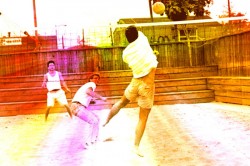
(Washington Blade file photo)
Little and Ed Bailey, who worked as a Tracks DJ and later as its director of promotions, pointed to some of the features of Tracks that set it apart from other clubs. Located in a sprawling warehouse building at 1111 First St., S.E., the club’s main room or hall included the region’s largest dance floor at the time.
Chernoff, who had been operating a Tracks nightclub in Denver, installed in the D.C. club the same state-of-the-art theatrical lighting and sound system he had been using in the Denver club. Chernoff also built in the D.C. club a separate video room with its own dance floor and sound system.
According to Bailey, the video screens were among the largest of any of the existing clubs in the area at a time when video screens were just starting to be installed in clubs in big cities like New York and Los Angeles.
And unlike most other clubs at the time, Chernoff had a large outdoor space as part of the Tracks property in which he installed a volleyball court with beach sand. He also built an 18-inch-deep pool surrounded by a large deck with chairs and an outdoor bar and grill, where hot dogs and hamburgers, among other food items, were served.
The outdoor space also featured yet another dance floor and sound system that became popular in the warm months.
“I built what I thought would work well, including some things where people said, ‘Are you crazy? Who ever heard of a volleyball court in a nightclub?’” Chernoff says. “And I said, ‘Well I tried it in Denver and it worked pretty well. Let’s give it a try here.’”
Bailey and others familiar with Tracks say the volleyball court along with the numerous other amenities at the club worked well, as capacity crowds came to the club on most weekends.
“The video, sound system and lighting were way ahead of their time,” Bailey says. “The music was always cutting edge. And it was far more laid back than other nightclubs.”
Tracks featured nationally known live performers almost once a month for several years. Among them were Gloria Gaynor, Thelma Houston, Crystal Waters, The Village People, Robin Ess, Martha Washington and CeCe Peniston.
Unlike many other gay clubs at the time, Tracks attracted a diverse cross section of the LGBT community, including whites, blacks, men and women, Latinos and Asians, Bailey and Little say. As word got out about Tracks’ grand scale, straights began to come to the club at various times.
Before long, Little says, Friday nights became known as “straight night,” even though gays continued to come to the club on that night.
“It was the biggest, coolest club in the city so other people started going,” Bailey says. “The straight crowd knew it was a gay club but they couldn’t find anything like it anywhere else.”
Chernoff says he and his staff welcomed the diversity of the crowds that packed the club, which sometimes exceeded its occupancy limit of 1,300 people.
He made it clear in no uncertain terms on a sign posted at the entrance that while everyone was welcome, Tracks was a gay club “and if that is a problem for you then you shouldn’t come in.”
“The one absolute we had is we were not going to discriminate,” Chernoff says.
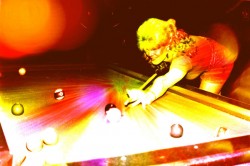
(Washington Blade file photo)
Little says the three nights of the reunion set for this weekend — Friday through Sunday — were put together to reflect the different types of music and crowds that came to Tracks on different nights.
Chernoff says he was especially proud of the lighting system and other features in the Tracks main hall. The enormous dance floor was surrounded by an elevated standing area where people could watch the action on the floor. He arranged for a small platform to be placed high above the main hall dance floor from which a giant mosaic mirrored disco ball was suspended that could be lowered and raised.
A heavy-duty cable was sometimes used to lower performers from the platform above the dance floor. During one of the club’s New Year’s Eve parties, a “heavy-set drag queen dressed only in a diaper” was lowered from the perch above the dance floor “to the hoots and hollers of the crowd below, which was taken by complete surprise.”
Celebrity encounters
Chernoff says one of the “horror stories” he recalls during the years he operated Tracks was when singer Grace Jones, who was booked for a live performance, refused to go on stage when the time for her act was scheduled to begin.
“She was just impossible to work with,” Chernoff says. “She said, ‘I’ll decide if I go on or not go on. I’ll see how I feel about it.’ I said, ‘You owe it your fans out there. Please go on stage.’ She said, ‘I’ll decide if I want to go on or not. Maybe I don’t feel like going on.’ So finally I said, ‘Enough is enough. Just get the hell out of my building. I don’t need to put up with this crap.’”
He says Tracks refunded the money for everyone who paid for admission to see Jones perform, writing off the episode as “one of our biggest disasters.”
Among the most pleasant encounters with a performer or group booked at Tracks was the appearance of the Village People, one of the most popular disco-era acts, especially for gay audiences, Chernoff says.
“It was such a great experience and such a great vibe,” he says. “So after they put the show on they didn’t leave. They stayed and partied with everybody until 5 or 6 in the morning. They said, ‘We don’t want to go home. We’re party people and this is the best party in town.’”
Changing times
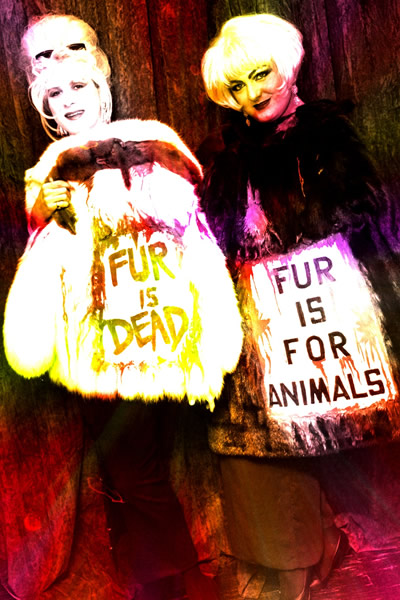
(Washington Blade file photo)
“It became a home for a lot of people,” says Reg Tyson, who was part of a group that partnered with D.C. businessman Paul Yates, who bought Tracks from Chernoff around 1990.
“I think it was the right place at the right time,” Tyson says. “It was a new place that allowed people to be free to be themselves, to express themselves.”
The club flourished under Yates’ ownership as Bailey, who had been working as a DJ, was moved by Yates to the post of director of promotions.
Chernoff says around 1996 Yates decided to withdraw from the business, and Chernoff resumed his position as Tracks owner until the time the club closed its doors in 1999. By that time Bailey had left Tracks to become involved with a new and even bigger nightclub located one block away called Nation, which started a Saturday night gay dance party called Velvet Nation.
“Like everything else, Tracks’ time had come,” Chernoff says. “You can’t hang on to the previous concept and expect it to move into the next decades and next generations. What made Tracks unique and phenomenal — it had run its course.”
Ongoing negotiations with a developer that had expressed interest in buying the Tracks property to build a new office building reached the stage where a deal was finalized, Chernoff says.
Bailey says he was honored to have worked for Chernoff and credits him with teaching him the ins and outs of operating a nightclub, skills that Bailey says helped him in his work at Nation.
“Tracks innovated the nightclub scene in a way that Nation benefited,” Bailey says.
Bailey says he was also honored that Chernoff and the Tracks staff invited him to work as DJ at Tracks during its closing night party in November 1999.
Kevin Brennan, a Tracks customer who was later hired as a lighting technician at the club, says he and his partner of 18 years, Don Oberholzer, have especially fond memories of Tracks.
“That’s where we met,” Brennan says. “I think he was dancing on one of the dance boxes in the big room and we just started talking.” They had their first date about a week later and have been a couple ever since. The two were married in D.C. last year.
“It made an impression on me in the sense that nothing else has ever compared,” Brennan says of the club. “I never felt like there was another club that had everything that Tracks had.”
Autos
Sport haulers: Jeep Grand Cherokee, Mercedes GLE-Class
Updated cabins, adept handling, and more
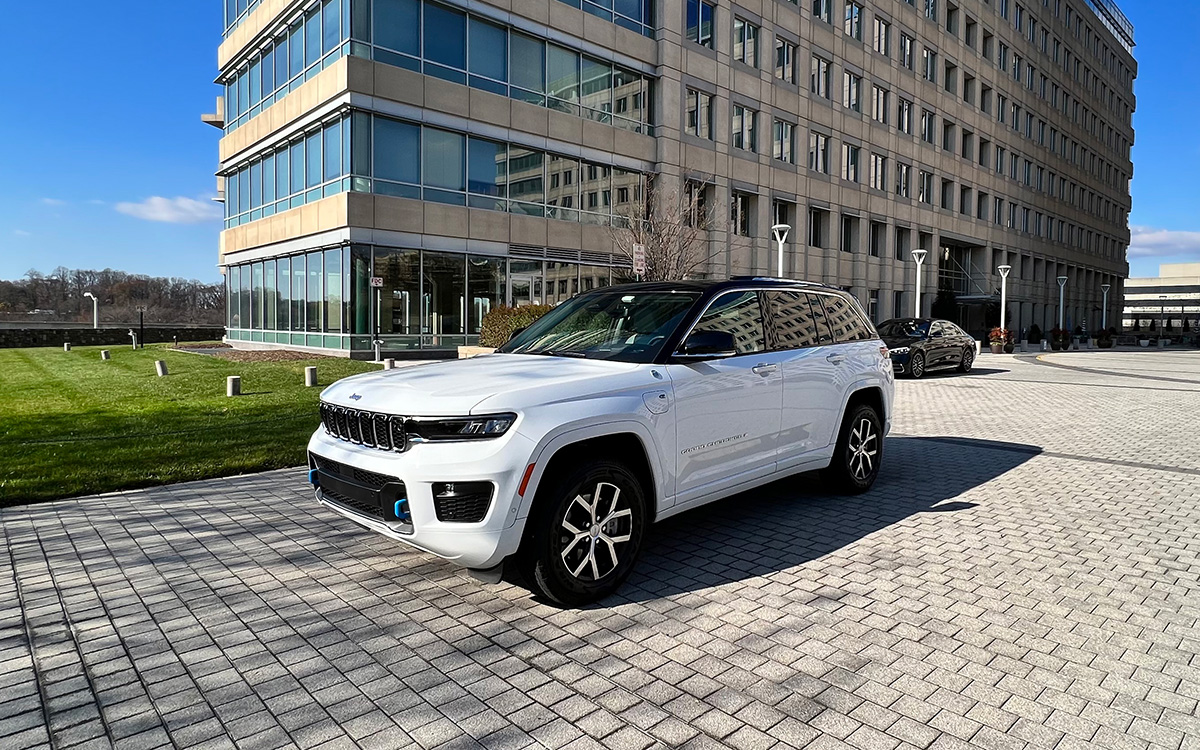
Now that March Madness and the Masters are over, it’s time for, well, everything else. For my husband and me, this means water sports, as in kayaks and rowing sculls, which is why we trekked to the Potomac for the George Washington Invitational regatta last weekend.
Alas, high winds splashed cold water on the event, canceling much of it. But there was still plenty of spirited camaraderie to rival “The Boys in the Boat.”
And I was reminded of my time years ago as a rower with D.C. Strokes, ferrying teammates to races up and down the East Coast. Back then my ride was a dated, rather cramped four-door sedan.
If only we could have paddled around in a sporty SUV like the two reviewed here. Now that would have been some smooth sailing (wink-wink).
JEEP GRAND CHEROKEE
$40,000
MPG: 19 city/26 highway
0 to 60 mph: 7.5 seconds
Maximum cargo room: 37.7 cu. ft.
PROS: Updated cabin, adept handling, strong towing
CONS: So-so gas mileage, no third row, pricey trim levels
IN A NUTSHELL: Rough, tough and buff. It’s doesn’t get much more butch than a Jeep. This year’s Grand Cherokee is no exception, with rugged looks, expert off-road capability and better-than-average towing capacity of 6,200 pounds.
There are a dizzying number of trim levels—more than a dozen—starting with the barebones base-model Laredo at an affordable $40,000. The lineup tops out with the Summit Reserve 4xe PHEV, which is almost twice the price at $76,000 and one of various plug-in hybrid versions available. Those plug-in hybrids can drive up to 25 miles on all-electric power before the four-cylinder gas engine kicks in. Otherwise, you can choose from a standard V6 or V8. Gas mileage on all trim levels is basically the same as the competition.
Where the Grand Cherokee really shines is in the handling. More refined than a Wrangler but less lavish than a Land Rover, this Jeep maneuvers just as well on city streets and highways as it does on bumpier terrain.
I tested the mid-range and mid-priced Overland, which comes standard with four-wheel drive and large 20-inch wheels. It also boasts a slew of niceties, such as quilted upholstery, panoramic sunroof and high-tech digital displays. These include a 10.25-inch infotainment touchscreen and rear-seat entertainment system.
The nine-speaker Alpine stereo, designed specifically for the Grand Cherokee, is pleasing. But I really wanted to hear the boffo 19-speaker McIntosh surround-sound system that Jeep also offers. Sigh, it’s only available on the premium Summit trim level.
MERCEDES GLE-CLASS
$64,000
MPG: 20 city/25 highway
0 to 60 mph: 6.6 seconds
Maximum cargo room: 33.3 cu. ft.
PROS: Lush interior, silky-smooth suspension, speedy
CONS: Some confusing electronics, tight third row, many competitors
IN A NUTSHELL: For a more high-class hauler, there’s the Mercedes GLE-Class. This midsize SUV is similar in size to the Jeep Grand Cherokee. But instead of seating five passengers, the GLE can carry up to seven. Sure, legroom in the optional third row may be tight for taller travelers, but it’s perfect for a cocky cockswain or two.
Six trim levels, ranging from the base-model GLE 350 to two high-performance AMG models. For eco-conscious buyers, the GLE 450e plug-in hybrid arrived earlier this year and can run on battery power alone for almost 60 miles.
My test car was the top-of-the-line AMG 63 S 4Matic, a head-turner in every way. Priced at a whopping $127,000, this GLE looks best in glossy black with the Night Package, which includes tasteful jet-black exterior accents and matte-black wheels. To complete the Darth Vader effect, there’s a deep, menacing exhaust rumble that’s downright threatening.
You expect such a ride to be wicked fast, and it is: 0 to 60 mph in a blistering 3.7 seconds. Yet the carbon ceramic brakes with their devil-red calipers are equally impressive in slowing things down quickly.
Inside, each GLE comes with two large digital displays on the elegantly sculpted dashboard. My favorite feature is the “Hey Mercedes” digital assistant, which responds to voice commands such as opening or closing the sunroof, operating the infotainment system or activating the climate controls.
It’s hard to find sport seats that are more comfortable, especially with the heavenly massage function (though those massage controls could be a bit more user-friendly.) For AMG models, the seats come with red-contrasting stitching and red seatbelts—a nod to the devilish demeanor under the hood.
Considering all the SUVs available in showrooms, few make quite the splash of a GLE.

Real Estate
Boosting your rental property’s curb appeal
Affordable upgrades to attract and keep tenants happy
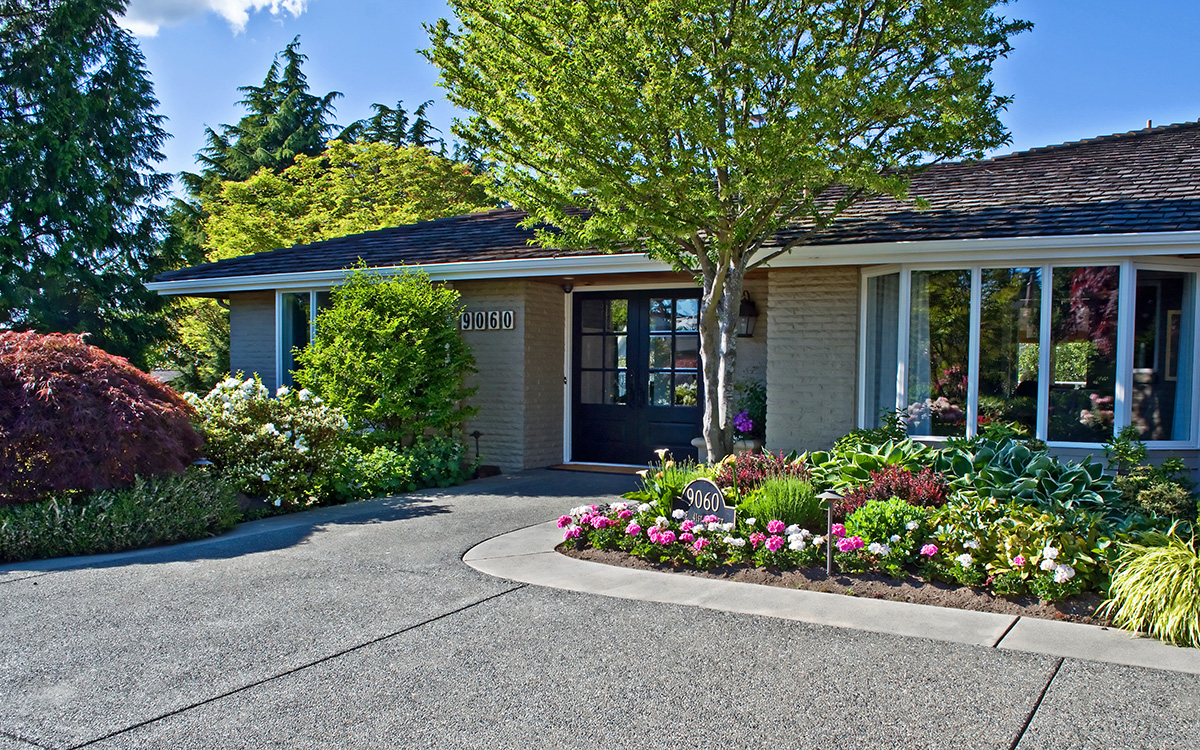
In the District of Columbia, the rental market tends to open up significantly during the springtime for several reasons. First, spring brings about a sense of renewal and change, prompting many individuals and families to seek new living arrangements or embark on relocations. Additionally, the warmer weather and longer daylight hours make it more conducive for people to explore housing options, attend viewings, and make decisions about moving. Furthermore, spring often coincides with the end of academic terms, leading to an influx of students and young professionals entering the rental market.
Landlords and property managers also tend to schedule lease renewals or list new vacancies during this time, capitalizing on the increased demand and ensuring a steady turnover of tenants. In the competitive world of rental properties, attracting and retaining quality tenants can be challenging. However, with some strategic upgrades, property owners can significantly enhance their units’ appeal without breaking the bank. From enhancing curb appeal to interior upgrades, here are some practical and cost-effective ideas to make your rental property stand out in the market.
Curb appeal
First impressions matter, and curb appeal plays a crucial role in attracting potential tenants. Simple enhancements like freshening up the exterior paint, adding potted plants or flowers, and ensuring a well-maintained lawn can instantly elevate the property’s appearance. Installing outdoor lighting not only adds charm but also enhances safety and security.
Interior upgrades
Upgrade the kitchen and bathroom fixtures to modern, energy-efficient options. Consider replacing outdated appliances with newer models, which not only appeal to tenants but also contribute to energy savings. Fresh paint and updated flooring can transform the look of a space without a hefty investment. Additionally, replacing worn-out carpets with hardwood or laminate flooring can make the unit more attractive and easier to maintain.
Enhance storage
Maximize storage options by installing built-in shelves, cabinets, or closet organizers. Tenants appreciate ample storage space to keep their belongings organized, contributing to a clutter-free living environment.
Improve lighting
Brighten up the interiors by adding more lighting fixtures or replacing old bulbs with energy-efficient LED lights. Well-lit spaces appear more inviting and spacious, enhancing the overall ambiance of the rental unit.
Upgrade window treatments
Replace outdated curtains or blinds with modern window treatments that allow natural light to filter in while offering privacy. Opt for neutral colors and versatile styles that appeal to a wide range of tastes.
Focus on security
Invest in security features such as deadbolts, window locks, and a reliable alarm system to ensure the safety of your tenants. Feeling secure in their home is a top priority for renters, and these upgrades can provide meaningful, genuine peace of mind.
Enhance outdoor spaces
If your rental property includes outdoor areas like a patio or balcony, consider sprucing them up with comfortable seating, outdoor rugs, and potted plants. Creating inviting outdoor spaces expands the living area and adds value to the rental property.
As landlords, investing in the enhancement of your rental properties is not merely about improving aesthetics; it’s about investing in the satisfaction and well-being of your tenants, and ultimately, in the success of your investment. By implementing these practical and affordable upgrades, you’re not only increasing the desirability of your units but also demonstrating your commitment to providing a high-quality living experience.
These efforts translate into higher tenant retention rates, reduced vacancy periods, and ultimately, a healthier bottom line. Moreover, by prioritizing the comfort, safety, and happiness of your tenants, you’re fostering a sense of community and trust that can lead to long-term relationships and positive referrals. So, let’s embark on this journey of transformation together, turning rental properties into cherished homes and landlords into valued partners in creating exceptional living spaces.
Scott Bloom is owner and Senior Property Manager of Columbia Property Management. For more information and resources, visit ColumbiaPM.com.
Real Estate
Real estate agents work hard for that commission
Despite recent headlines, buyers and sellers benefit from our expertise

With there being a lot of noise in the media lately as I am sure you have read and heard headlines like “Gone are the days of the 6% commission” and “End of the good days of Realtors,” etc., I wanted to re-run a very short article of the long laundry list of things that well versed real estate agents bring to the table to earn that seldom 6% commission. It’s typically split in half and it has always been negotiable).
As a real estate professional you will go on listing appointments and buyer meetings to not only attempt to gain business but in doing so you also educate the general public on what it is that we as real estate professionals do. I know what you’re thinking – and if you’ve seen my photo before you wouldn’t be wrong to assume that I am cast in “Selling DC” as the lead villain. I am just waiting for that phone call! But in all seriousness, when I sit down to come up with a list of things to prove to prospective clients the value in working with me as their real estate professional, I am pretty blown away at the items and qualities that a trusted professional representing you in a real estate transaction is responsible for managing a myriad of tasks, including but not limiting to the following:
• Have a pulse on the marketplace to truly understand exactly what is happening from a buying and selling standpoint while also understanding the economic side of things – not just looking at interest rates. Why are rates where they are? What employers are laying off and could cause an influx of inventory? What are the trends for individuals moving IN or OUT of an area looking like? Forecasting the marketplace of all things that truly affect real estate is vital.
• Soft Skills – these are the skills often considered as customer service skills. The ability to be approachable by all types of people and ensure that you are open to receive information. Also – when telling you bad news – it’s important to ensure that it is done in a manner in which you, the receiver, will be pleasantly receptive.
• Pre-market vendors – not only are real estate professionals expected to market your home for sale or locate a home for you to purchase, we are also expected to have a list of pre-market vendors to which you can use for your lending needs, home inspection, title work, any fluffing and buffing needed pre market for the sale of your home such as a contractor, painter, landscaper etc. We have a book of extremely well vetted vendors that either I personally have used or past clients have used that can assist with your needs. This beats Googling for hours and accidentally choosing the wrong contractor. Section A of the pre-market vendor list includes those in which we real estate professionals use for marketing materials for your property – we will use the best photographers, have floor plans drawn for your property, video, staging, catering for brokers opens and the list goes on. Again – this is a well vetted list that we have worked on for years and done all of the heavy lifting and had those uncomfortable conversations when things are not properly executed – so you don’t have to.
• On Market Tasks – these are the tasks that most clients are unaware that we do. Oftentimes when a listing is on market – folks think that I am just cruising around in my convertible buying nice things. However I am in fact going around checking each listing on market to ensure that they are clean, the booties are replaced, marketing materials are stocked, light bulbs are all working, staging looks crisp and the list truly goes on. That of course, doesn’t include the tasks we do to properly market the property such as weekly email blasts, reaching out several times to follow up with showing agents to get their feedback, check the market to see what our competition looks like, what’s under contract and why, and again…..I could go on. Needless to say the most important and time consuming tasks are those that are done when the property is on market.
• “Contract to close” management – the term contract to close is pretty much what it sounds like – it’s what happens from the time we go under contract until we reach the closing finish line and you have those keys. Once a trusted real estate professional has fiercely negotiated on your behalf as a buyer, the fun starts. Again pops up this vendor list – helping guide you though selection of a home inspector, termite inspector, etc. for the inspections. A title attorney is needed (depending on your jurisdiction) and any other vendors for quotes like renovations, etc., that you might want done to the property. Once the inspection is completed and we go through possible re-negotiations then we must ensure that the lender has the documents needed from you completed in order to have the appraisal done to prove the value of the home you are under contract for. Now we are getting into the weeds – but once we are on the other side of things and the appraisal comes back at value and the loan is clear to close then we are at the finish line to your new home.
A similar story can be told if you are selling your home. The appraisal is a very important part of the checklist as that is the value in which your home is worth. The appraiser is a third party that neither the buyer, seller, lender or myself have any allegiance to. I do, however, have the duty to educate said appraiser on why I chose the listing price and how I came up with that value.
• Post-market vendors. As mentioned before, a real estate professional should have a book of well vetted vendors from which to choose. Looking at the list of vendors now that we are on the other side of the table – I can provide a cleaning person, HVAC contractor, someone to repair the sprinkler system, a dog walker, the best caterers and bakery in town. Further down the road I am able to provide a wonderful wealth manager who can tell you what to do with that piece of real estate you purchased some time ago and we could go on for days.
While you are fully entitled to not use a real estate agent during your real estate transaction, I do believe that it is well within the realm of possibilities to say that without one there would be loose ends not completely tied up, things mismanaged and possible delays that could cost real cash. All of that aside, it is also such a truly wonderful experience to work alongside a trusted professional that at the end of the transaction becomes a new friend and family member. Real estate professionals love what they do, they love real estate and people and sheepherding you through the home buying or selling process is what it’s all about to us.
Justin Noble is a Realtor with Sotheby’s international Realty licensed in D.C., Maryland, and Delaware for your DMV and Delaware Beach needs. Specializing in first-time homebuyers, development and new construction as well as estate sales, Justin is a well-versed agent, highly regarded, and provides white glove service at every price point. Reach him at 202-503-4243, [email protected] or BurnsandNoble.com.

